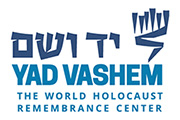This important and fundamental study presents a comprehensive account of the Jews in the Crimea and the North Caucasus in the Holocaust years. Based on extensive archival research, Feferman covers the life and destruction of the Jewish population in the region and describes in detail the relations between Jews and non-Jews before and during the war; the evacuation of Jews into these regions and out of them; the German occupation and the annihilation of the Ashkenazi Jewish population; the fate of non-Ashkenazi Jews in the area; Jewish responses; and reactions of local populations, including Cossacks, devout Orthodox Christians and Muslims.
Objective factors, such as the availability of German manpower and food, weather and geographic conditions, in addition to subjective factors, such as the attitudes of Wehrmacht commanders, left their imprint on the implementation of the “Final Solution” policy in these areas. By the time the Germans occupied the Crimea in November 1941, it was absolutely clear to them that the Jews had to be eliminated. All the more so when they came to dominate the North Caucasus in the summer of 1942. Yet, the Nazi decision-makers were vexed by the need to clarify who was a Jew. The case of the Ashkenazi Jews was clear-cut, and their fate was similar to that of their brethren elsewhere in Europe. However, the Germans faced a formidable difficulty in categorizing the non-Ashkenazi Karaites and Krymchaks in the Crimea, and Mountain Jews in the North Caucasus, who, according to the Nazi world-view, shared some but not all racial and religious characteristics of Jews. Subsequently, German investigation involved a thorough pseudo-scientific analysis of racial and religious features by the Nazi academy, as well as SS “researchers.”
Set against the background of the ongoing murder of Ashkenazi Jews in these regions and local politics with geo-political implications, this research title also focuses on the support – or lack thereof – lent to Karaites, Krymchaks and Mountain Jews by local Muslims. These interwoven histories cover a hitherto unexplored terrain in Holocaust history, and offer a fascinating window into the history of the Crimea and the North Caucasus and the fate of their Jewish inhabitants during World War II.
